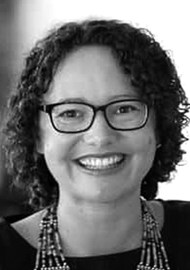Too old to app? Time to think again! Bec Bennett discusses why it’s time for healthcare professionals to hit reset on expectations of digital literacy. Mobile health (mHealth) apps have the potential to enhance audiological care by supporting the self-management of hearing loss and associated conditions, as well as the self-management of hearing interventions (e.g. hearing aids).
Audiology-specific apps encompass a range of tools, including hearing test apps, tinnitus management programs, auditory training exercises, remote hearing aid adjustments and communication support tools. These apps can empower users by providing real-time feedback, personalised hearing strategies and greater access to self-help resources [1,2]. For hearing care professionals (HCPs), audiology apps can facilitate remote monitoring, enhance patient engagement and improve service efficiency. Despite these benefits, app adoption among both HCPs and clients remains inconsistent. Our study explored the barriers and facilitators influencing the integration of audiology-specific apps in clinical practice from both client and clinician perspectives.

Study overview
A cross-sectional survey of 824 adults accessing hearing services (aged 40–70 years) and 191 Australian HCPs was conducted. The survey examined attitudes toward app use and factors influencing HCPs’ recommendation as well as clients’ adoption of audiology-specific apps.
Smartphone ownership and app use among clients
The vast majority of adults aged 40–70 years accessing hearing services owned a smartphone (97.5%). Nearly half (46.3%) of these individuals used health-related apps, demonstrating an existing foundation for digital health adoption. One of the strongest facilitators for app uptake was a personal recommendation from an HCP, alongside clear and simple app guidance. These findings highlight that while many adults with hearing loss are open to using apps, the way these tools are introduced and supported by professionals plays a critical role in their adoption.
HCPs’ app recommendation patterns
Although most HCPs (96.7%) reported feeling highly capable and confident in using apps, their clinical recommendation rates varied significantly. Two-thirds of HCPs recommended apps to at least 50% of their clients, yet many were selective about whom they offered them to. The most commonly recommended apps were those designed for hearing aid self-management (e.g. volume adjustments), with 84.1% of clinicians often recommending these tools. Tinnitus management apps were also relatively common, with 37.1% of HCPs recommending them. However, other types of audiology-related apps, including speech-to-text, mental health, and hearing self-assessment apps, were rarely or never recommended. This discrepancy suggests that while clinicians see value in certain digital tools, many other potentially beneficial apps remain underutilised in clinical practice.
"One of the strongest facilitators for app uptake was a personal recommendation from an HCP, alongside clear and simple app guidance"
Barriers to client adoption: a clinician-client mismatch
A notable discrepancy emerged between what HCPs perceived as client barriers and what clients actually reported. Clinicians frequently cited concerns about their clients’ digital literacy, dexterity and cognition as reasons for not recommending apps. In contrast, clients identified privacy, security and cost as their primary concerns. This misalignment suggests that HCPs may be underestimating their clients’ technological capabilities while overlooking issues of trust and affordability. If clinicians assume that digital literacy is the main barrier, they may fail to address the actual reasons clients hesitate to use health apps. To bridge this gap, clinicians need to engage in direct discussions with clients to better understand their concerns and provide appropriate reassurances.
HCP decision-making: assumptions and biases
The study also revealed that some HCPs make assumptions about technology use based on client age. Some explicitly stated that they do not offer apps to older clients, believing they would struggle with technology. However, many older clients are highly engaged with digital tools and can benefit from app recommendations [3]. Rather than using age as a determining factor, HCPs should engage in discussions about each client’s comfort with technology and provide guidance when needed.
What would help HCPs recommend more apps?
Clinicians reported that they would be more likely to integrate audiology-specific apps into their practice if they had access to trial periods, comprehensive user manuals, research evidence on client benefits and workflow integration support. Training tailored to clinical environments and peer learning opportunities could further improve confidence in app recommendations and facilitate greater integration of digital health tools into audiology practice.
Rethinking digital literacy
Rather than relying on assumptions about age or presumed digital competence, clinicians should approach each client as an individual – meeting them where they are at. A person- and family-centred care (PFCC) approach encourages HCPs to engage in open, respectful conversations that explore each client’s unique needs, preferences and capabilities. This includes asking about a client’s familiarity and comfort with using smartphones, apps and other digital tools, regardless of their age.

While it may be tempting to assume that older clients will struggle with technology, this assumption risks unintentionally excluding individuals who are both willing and able to engage with digital health tools. At the same time, younger clients should not be presumed to have advanced digital literacy without first understanding their actual experience. Respecting clients as partners in their care means offering equal access to resources and information. By taking time to understand each client’s digital comfort level and tailoring support to match, HCPs can promote more inclusive, equitable and effective integration of audiology apps into everyday practice.
Expanding app recommendations beyond hearing aid adjustments
While hearing aid self-management apps are widely recommended, other types of audiology-related apps remain underutilised. Speech-to-text apps (e.g. NALscribe), hearing self-assessment tools and wellbeing apps can provide significant benefits to clients. By broadening the scope of recommended apps, HCPs can offer clients more comprehensive support for managing hearing loss in various aspects of their daily lives.
Conclusion
This study highlights the need for a shift in how HCPs assess, discuss and recommend health apps. Moving away from assumptions about digital literacy, proactively addressing privacy and cost concerns and ensuring structured support for app adoption could help HCPs bridge the gap between the potential of audiology apps and their real-world use. Clients are often more tech-savvy than clinicians assume, and providing clear guidance on privacy and affordability can encourage greater adoption. By expanding app recommendations beyond hearing aid adjustments and implementing structured assessment tools, clinicians can empower clients to make informed decisions about their hearing healthcare. Taking these steps will help ensure that digital solutions are accessible, beneficial and seamlessly integrated into audiology practice.
References
1. Maidment DW, Amlani AM. Argumentum ad ignorantiam: smartphone-connected listening devices. Semin Hear 2020;41(4):254–65.
2. Ng SL, Phelan S, Leonard M, Galster J. A qualitative case study of smartphone-connected hearing aids: influences on patients, clinicians, and patient–clinician interactions. J Am Acad Audiol 2017;28(06):506–21.
3. Ferguson MA, Eikelboom RH, Sucher CM, et al. Remote technologies to enhance service delivery for adults: clinical research perspectives. Semin Hear 2023;44(3):328–50









